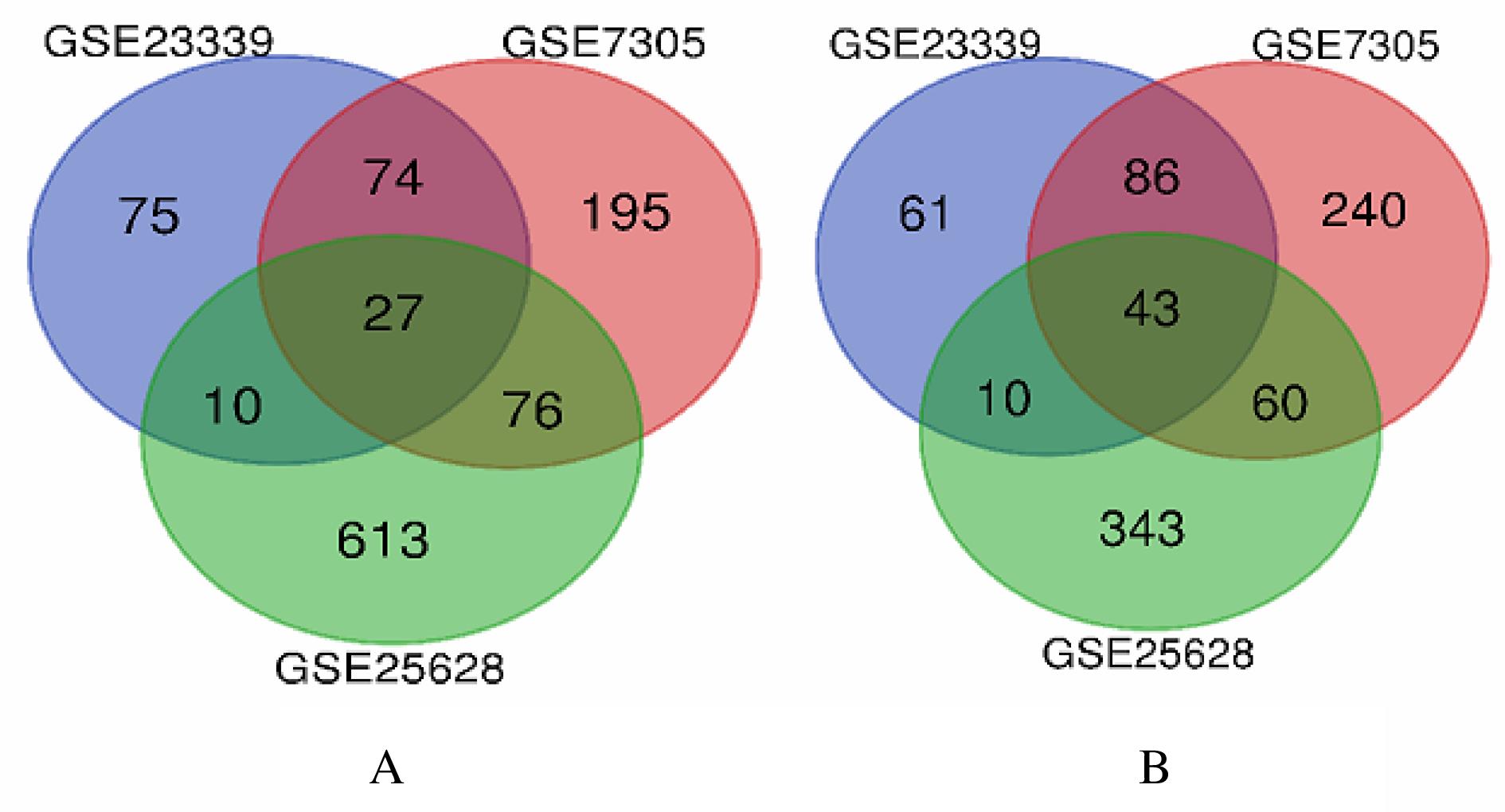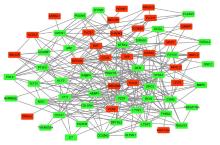| 1 |
MOUNSEY A L, WILGUS A, SLAWSON D C. Diagnosis and management of endometriosis[J]. Am Fam Physician, 2006, 74(4): 594-600.
|
| 2 |
FLORES I, RIVERA E, RUIZ L A, et al. Molecular profiling of experimental endometriosis identified gene expression patterns in common with human disease[J]. Fertil Steril, 2007, 87(5): 1180-1199.
|
| 3 |
TVAN GORP, AMANT F, NEVEN P, et al. Endometriosis and the development of malignant tumours of the pelvis. A review of literature[J]. Best Pract Res Clin Obstet Gynaecol, 2004, 18(2): 349-371.
|
| 4 |
BISCHOFF F, SIMPSON J L. Genetics of endometriosis: heritability and candidate genes[J]. Best Pract Res Clin Obstet Gynaecol, 2004, 18(2): 219-232.
|
| 5 |
VIGANO P, SOMIGLIANA E, VIGNALI M, et al. Genetics of endometriosis: current status and prospects[J]. Front Biosci, 2007, 12: 3247-3255.
|
| 6 |
FAIRLIE D P, WEST M L, WONG A K. Towards protein surface mimetics[J]. Curr Med Chem, 1998, 5(1): 29-62.
|
| 7 |
YAN Y, XU Z, QIAN L, et al. Identification of CAV1 and DCN as potential predictive biomarkers for lung adenocarcinoma[J]. Am J Physiol Lung Cell Mol Physiol, 2019, 316(4): L630-L643.
|
| 8 |
XU Y, XIA Q, RAO Q, et al. DCN deficiency promotes renal cell carcinoma growth and metastasis through downregulation of P21 and E-cadherin[J]. Tumour Biol, 2016, 37(4): 5171-5183.
|
| 9 |
ŽLAJPAH M, HAUPTMAN N, BOŠTJANČIČ E,et al.Differential expression of extracellular matrix‑related genes DCN, EPHA4, FN1, SPARC, SPON2 and SPP1 in colorectal carcinogenesis[J]. Oncol Rep, 2019. DOI:10.3892/or.2019.7274 .
doi: 10.3892/or.2019.7274
|
| 10 |
TANG R Y, WANG Z, CHEN H Q, et al. Negative correlation between miR-200c and decorin plays an important role in the pathogenesis of colorectal carcinoma[J]. Biomed Res Int, 2017, 2017: 1038984.
|
| 11 |
REKKER K, SAARE M, ROOST A M, et al. Circulating miR-200-family micro-RNAs have altered plasma levels in patients with endometriosis and vary with blood collection time[J]. Fertil Steril, 2015, 104(4): 938-946.e2.
|
| 12 |
ONO Y J, TERAI Y, TANABE A, et al. Decorin induced by progesterone plays a crucial role in suppressing endometriosis[J]. J Endocrinol, 2014, 223(2): 203-216.
|
| 13 |
KEDEM A, ULANENKO-SHENKAR K, YUNG Y, et al. Elucidating Decorin’s role in the preovulatory follicle[J]. J Ovarian Res, 2020, 13(1): 15.
|
| 14 |
SCHAEFER L, TREDUP C, GUBBIOTTI M A,et al. Proteoglycan neofunctions: regulation of inflammation and autophagy in cancer biology[J].FEBS J,2017,284(1):10-26.
|
| 15 |
HU L, ZANG M D, WANG H X, et al. Biglycan stimulates VEGF expression in endothelial cells by activating the TLR signaling pathway[J]. Mol Oncol, 2016, 10(9): 1473-1484.
|
| 16 |
XING X J, GU X H, MA T F. Knockdown of biglycan expression by RNA interference inhibits the proliferation and invasion of, and induces apoptosis in, the HCT116 colon cancer cell line[J]. Mol Med Rep, 2015, 12(5): 7538-7544.
|
| 17 |
SUN H, WANG X, ZHANG Y, et al. Biglycan enhances the ability of migration and invasion in endometrial cancer[J]. Arch Gynecol Obstet, 2016, 293(2): 429-438.
|
| 18 |
KOCBEK V, HEVIR-KENE N, BERSINGER N A, et al. Increased levels of biglycan in endometriomas and peritoneal fluid samples from ovarian endometriosis patients[J]. Gynecol Endocrinol, 2014,30(7): 520-524.
|
| 19 |
VOUK K, SMUC T, GUGGENBERGER C, et al. Novel estrogen-related genes and potential biomarkers of ovarian endometriosis identified by differential expression analysis[J].J Steroid Biochem Mol Biol, 2011, 125(3/4/5): 231-242.
|
| 20 |
GUERRERO-PRESTON R, SOUDRY E, ACERO J, et al. NID2 and HOXA9 promoter hypermethylation as biomarkers for prevention and early detection in oral cavity squamous cell carcinoma tissues and saliva[J]. Cancer Prev Res (Phila), 2011, 4(7): 1061-1072.
|
| 21 |
SCHUSSEL J, ZHOU X C, ZHANG Z, et al. EDNRB and DCC salivary rinse hypermethylation has a similar performance as expert clinical examination in discrimination of oral cancer/dysplasia versus benign lesions[J]. Clin Cancer Res, 2013, 19(12): 3268-3275.
|
| 22 |
SCHMITZ S, ANG K K, VERMORKEN J, et al. Targeted therapies for squamous cell carcinoma of the head and neck: current knowledge and future directions[J]. Cancer Treat Rev, 2014,40(3): 390-404.
|
| 23 |
KAUR J, JACOBS R, HUANG Y, et al. Salivary biomarkers for oral cancer and pre-cancer screening: a review[J]. Clin Oral Investig, 2018, 22(2): 633-640.
|
| 24 |
NAGATA S, HAMADA T, YAMADA N, et al. Aberrant DNA methylation of tumor-related genes in oral rinse: a noninvasive method for detection of oral squamous cell carcinoma[J]. Cancer, 2012, 118(17): 4298-4308.
|
| 25 |
ROBERTSON K D. DNA methylation, methyltransferases, and cancer[J]. Oncogene, 2001, 20(24): 3139-3155.
|
| 26 |
KUK C, GUNAWARDANA C G, SOOSAIPILLAI A,et al. Nidogen-2: a new serum biomarker for ovarian cancer[J]. Clin Biochem, 2010, 43(4/5): 355-361.
|
| 27 |
CHENG Z X, HUANG X H, WANG Q, et al. Clinical significance of decreased nidogen-2 expression in the tumor tissue and serum of patients with hepatocellular carcinoma[J]. J Surg Oncol, 2012, 105(1): 71-80.
|
| 28 |
冯婉琴,邓月秀,马 颖,等. miR-34a-5p及AKT1基因在子宫内膜异位症子宫内膜组织中的表达及其对子宫内膜基质细胞迁移和侵袭的影响[J].解放军医学杂志, 2020,45(5): 503-508.
|
| 29 |
NAUMNIK W, OSSOLIŃSKA M, PŁOŃSKA I,et al. Circulating thrombospondin-2 and FGF-2 in patients with advanced non-small cell Lung cancer: correlation with survival[J]. Adv Exp Med Biol,2015,833:9-14.
|
| 30 |
BORNSTEIN P, ARMSTRONG L C, HANKENSON K D, et al. Thrombospondin 2, a matricellular protein with diverse functions[J]. Matrix Biol, 2000, 19(7): 557-568.
|
| 31 |
ZHUO C, LI X, ZHUANG H, et al. Elevated THBS2, COL1A2, and SPP1 expression levels as predictors of gastric cancer prognosis[J]. Cell Physiol Biochem, 2016, 40(6): 1316-1324.
|
| 32 |
SLAVIN S, YEH C R, DA J, et al. Estrogen receptor alpha in cancer-associated fibroblasts suppresses prostate cancer invasion via modulation of thrombospondin 2 and matrix metalloproteinase 3[J]. Carcinogenesis,2014,35(6):1301-1309.
|
| 33 |
CHEN P C, TANG C H, LIN L W, et al. Thrombospondin-2 promotes prostate cancer bone metastasis by the up-regulation of matrix metalloproteinase-2 through down-regulating miR-376c expression[J]. J Hematol Oncol, 2017, 10(1): 33.
|
| 34 |
LAWLER J, DETMAR M. Tumor progression: the effects of thrombospondin-1 and -2[J]. Int J Biochem Cell Biol, 2004, 36(6): 1038-1045.
|
| 35 |
BARBE A M, BERBETS A M, DAVYDENKO I S, et al. Expression and significance of matrix metalloproteinase-2 and matrix metalloproteinas-9 in endometriosis[J]. J Med Life, 2020, 13(3): 314-320.
|
 )
)




